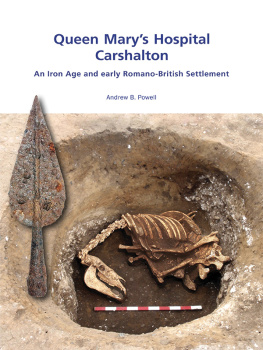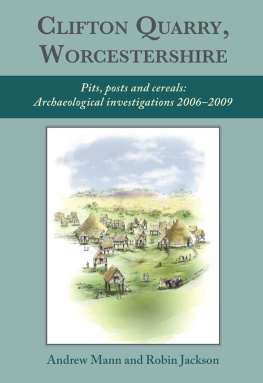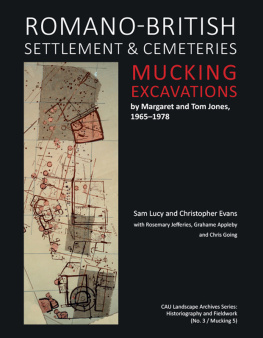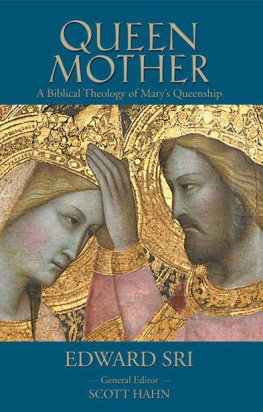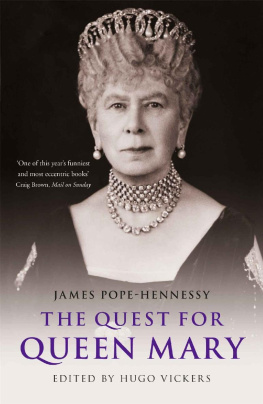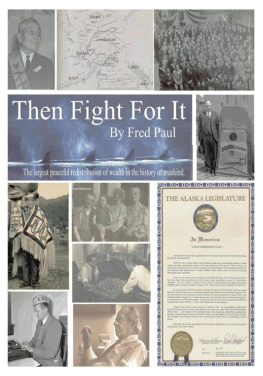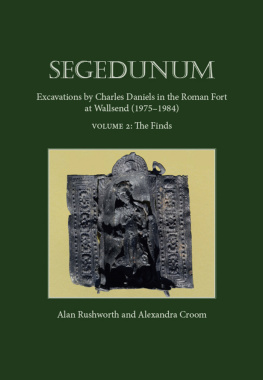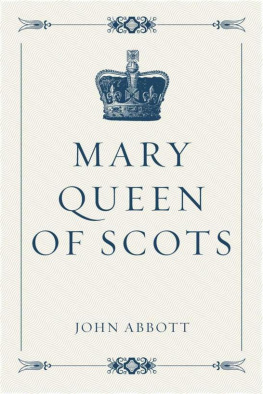
Queen Marys Hospital Carshalton
An Iron Age and early Romano-British Settlement
Andrew B. Powell
Queen Marys Hospital Carshalton
An Iron Age and early Romano-British Settlement
Andrew B. Powell
with contributions by
Phil Andrews, Alistair J. Barclay, Catherine Barnett, Nicholas Cooke Kirsten Egging Dinwiddy, A. P. Fitzpatrick, Phil Harding, L. Higbee Lorraine Mepham, Rachael Seager Smith and Sarah F. Wyles
Illustrations by
Will Foster and S. E. James
Wessex Archaeology Occasional Paper
2017
Published 2017 by Wessex Archaeology Ltd
Portway House, Old Sarum Park, Salisbury, SP4 6EB
www.wessexarch.co.uk
Copyright 2017 Wessex Archaeology Ltd
All rights reserved
British Library Cataloguing in Publication Data
A catalogue record for this book is available from the British Library
ISBN 978-1-874350-94-1
eISBN 978-1-874350-95-8
Mobi ISBN 978-1-874350-97-2
Designed and typeset by Kenneth Lymer
Cover design by Will Foster
Copy-edited by Philippa Bradley
Front cover
Horse burial in Iron Age pit 3231, and decorated spearhead/ensign from Iron Age pit 3998
Back page
Left to right: site during excavation; dog burial in Romano-British pit 2047; pars pro toto deposit in Iron Age pit 3898
Wessex Archaeology Ltd is a company limited by guarantee registered in England, company number 1712772. It is also a Charity registered in England and Wales number 287786, and in Scotland, Scottish Charity number SC042630. Our registered office is at Portway House, Old Sarum Park, Salisbury, Wiltshire, SP4 6EB.
List of Figures
Chapter 1
Location of the site, the Roman road network, and other sites mentioned in the text
Plan showing the development area and excavations around the site
Chapter 2
The 2008/2010 excavation area, showing all features by period
West-facing section of shaft 3676 and feature 3683
Features of the Early/Middle Iron Age phase
Sections of Early Iron Age pits 3011, 3940 and 4066, and Middle Iron Age pit 3231
Features of the Late Iron Age phase
Sections of Middle/Late Iron Age pit 3223 and Late Iron Age pit 3225
Section of Middle/Late Iron Age pit 3341
Features of the early Romano-British phase
Sections of early Romano-British pits 3183 and 3458/3482
Section of Late Iron Age/early Romano-British pit 4376/3174
Section and plan of early Romano-British pit 3535
Chapter 3
Early Iron Age pottery (17)
Middle and Middle/Late Iron Age pottery (817)
Middle/Late and Late Iron Age pottery (1831)
Late Iron Age/early Romano-British pottery (3248)
Iron Age metal objects (15)
Romano-British metal objects (610)
Relative importance of livestock species per phase by NISP
Relative importance of livestock species per phase by MNE, MNI and MWE
Relative frequency of livestock species from the site based on the adjusted NISP count compared to Early/Middle Iron Age, Late Iron Age and early Romano-British sites in south-east England
Relative frequency of livestock species from the site based on the adjusted NISP count compared to Early/Middle Iron Age, Late Iron Age and early Romano-British sites in south-east England by site type
Relative frequency of livestock species from the site based on adjusted NISP count compared to a selection of Early, Middle and Late Iron Age, and early Romano-British sites in south-east England
Relative frequency of livestock from selected Iron Age and Romano-British ritual and religious sites
Sheep and cattle body part representation by phase expressed as a percentage of MNI in relation to the most common element
Sheep and cattle mortality profiles based on mandibles retaining 2+ teeth with recordable wear
Early Romano-British pit 3174 fill (3711): sheep body part representation expressed as a percentage of MNI in relation to the most common element
Number of left and right sheep bones from early Romano-British pit 3174
Chapter 4
Probability distributions of dates relating to Orchard Hill based on the outlined model
Probability distributions for selected events (digging of features), significant deposits and burials
Probability distributions for pit 3174
Probability distribution of the number of years during which deposits were made and formed within pit 3174
List of Plates
Chapter 2
Grave 3052 in ditch 3050, viewed from the north
Horse skeleton (ABG 70) in Middle Iron Age pit 3231, viewed from the north
Placed deposit in pit 3088, viewed from the west
Dog skeletons (ABG 60 and 61) in pit 3341, possibly arranged so as to appear to be mating
Placed deposit in Late Iron Age pit 3998, viewed from the east-north-east
Neonate burial (3483) in fill of early Romano-British pit 3458, viewed from the north
Excavating the animal bone deposit (3711) in pit 3174, viewed from the west
Animal bone deposit (3537) in pit 3535
Neonate burial (3652) in grave 3651, viewed from the south
Neonate burial (3809) in upper fill of undated pit 3910, viewed from the west
List of Tables
Chapter 3
Pottery totals by chronological period
Overall pottery quantities by fabric type and phase
Iron Age vessel forms by fabric type
Overall pottery quantities by chronological period and phase
Pottery quantities of the Iron Age fabric types by chronological period
Quantification of the fired clay fabrics by phase
Ironworking debris by feature and/or context
Details of smithing hearth bottoms from pit 3174
Flint totals by type
Summary of the human bone by phase
Number of identified specimens present by period
Number and percentage of bones from Associated Bone Groups
Chapter 4
Charred plant remains: Iron Age
Charred plant remains: early Romano-British
Wood charcoal
Radiocarbon dates obtained for selected samples
Modelled radiocarbon dates for the digging event of selected individual pits
Modelled dates for the construction event of each enclosure ditch phase
Probability order of radiocarbon datesfor selected events
Acknowledgements
This project was commissioned by CgMs Consulting Ltd, and Wessex Archaeology would like to thank Duncan Hawkins for his assistance throughout. Thanks are also due to John Brown, Jane Sidell and Mark Stevenson of the Greater London Archaeological Advisory Service (GLAAS) who monitored the work on behalf of the Local Planning Authority. Alex Bayliss and Frances Healy provided useful advice and guidance on the radiocarbon dating programme. Nick Truckle provided support and advice throughout the various stages of the project.
The excavations were managed by Sue Farr, and directed by Mike Dinwiddy (2008) and Chloe Hunnisett (2010). The post-excavation assessments were undertaken by Andrew Powell and Chloe Hunnisett, and the postexcavation assessment and analysis was managed by Sue Farr. Alistair Barclay managed the final stages of analysis and the production of the report was coordinated by Philippa Bradley. The project archive will be deposited with the London Archaeological Archive and Research Centre (LAARC) under the Museum of London site code OHH 08.
Abstract
In 200810 a programme of archaeological works was undertaken on land formerly occupied by Queen Marys Hospital, Carshalton, in the London Borough of Sutton, in advance of the sites redevelopment. The site, which lies on the north-facing dip slope of the North Downs overlooking the valley of the River Wandle, lay immediately outside a substantial Late Bronze Age ringwork, which is a Scheduled Monument (LO 163).
Next page
